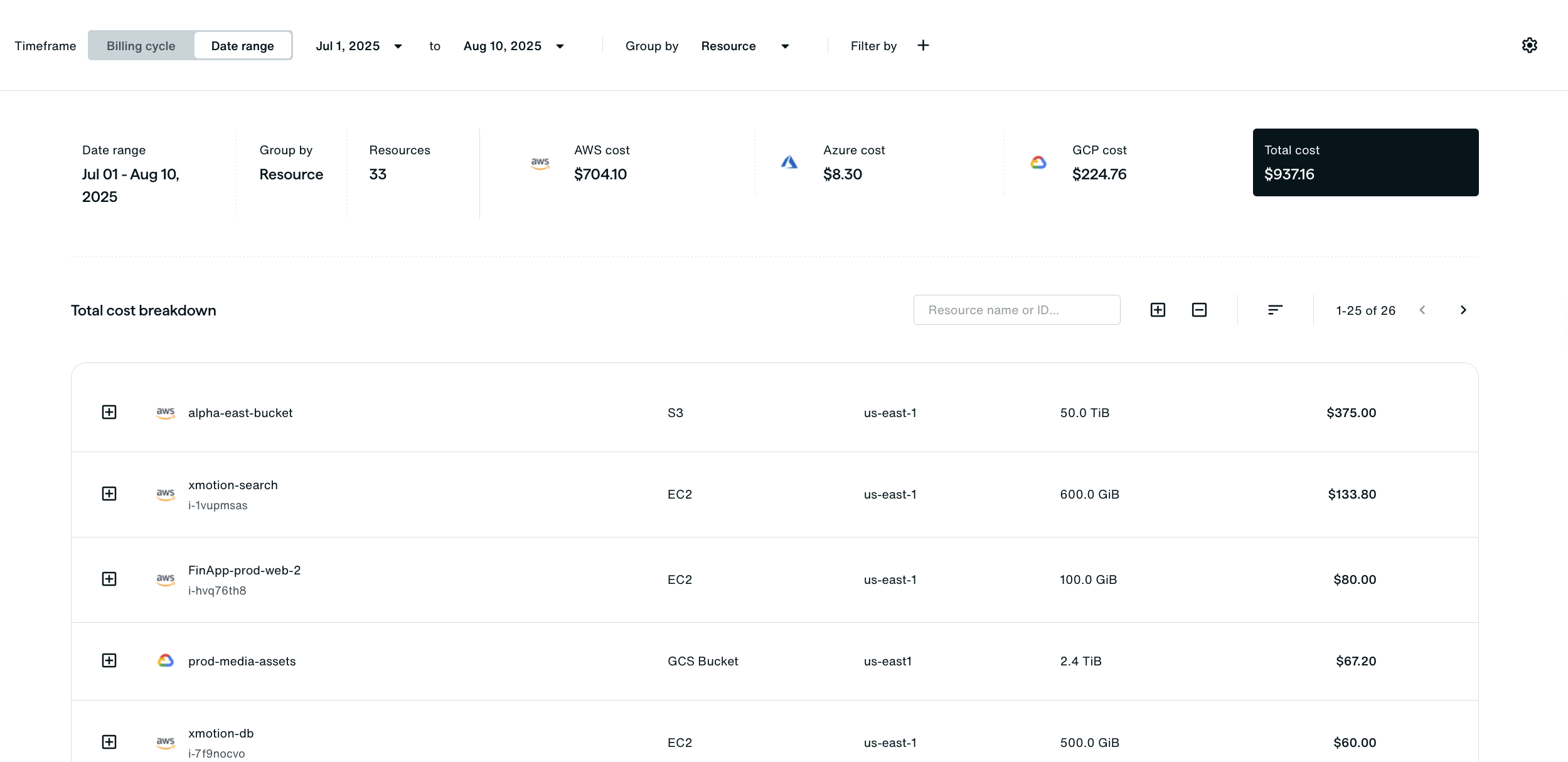The Problem: Cloud Backup Bills Are Hard to Read
Cloud provider bills are massive: thousands of line items, multiple accounts or subscriptions, and native cost explorers that lump backup costs in with everything else. And all that spend often grows unexpectedly due to backup sprawl or outdated snapshots. Multi‑cloud teams often end up juggling:
- Multiple logins and dashboards
- Endless CSV exports
- Homegrown spreadsheets that still leave questions unanswered
Eon’s Solution: Cost Explorer API and Dashboard
Eon’s new Cost Explorer API and Dashboard empower you to see exactly who’s driving backup costs, spot anomalies in minutes, and allocate spend to the right teams, all without spreadsheets or manual reporting. Drill down with the API, or get at‑a‑glance trends in the Dashboard for fast, confident chargeback and cost control.
One customer told us that reconciling a 5,000‑line Azure bill to a single backup server used to be almost impossible. With Eon, they can now roll up that insight to management in minutes and even spot opportunities to archive or optimize storage.
Because Eon is a fully managed SaaS backup solution, your Cost Explorer view reflects the entire cost of your backups, including storage and compute, without hidden charges buried in provider invoices. You’re not running backup jobs in your own accounts, so nothing is missing from the bill.
How to Track Backup Costs by Account, Resource, and Cloud
Eon Cost Explorer was built for CloudOps and FinOps teams who need clear answers fast. Here’s how it works.
Step 1: See Backup Spend at a Glance
Open the Cost Dashboard, and you immediately see:
- Which accounts or business units are spending the most
- Which resource types (VMs, storage, databases) drive that spend
- Trends over your billing cycle, so spikes are obvious
Step 2: Drill into High‑Spending Accounts
From the dashboard, you can jump into Cost Explorer to investigate further. Grouping by account quickly confirms which team or business unit is responsible for the bulk of the spend.
A common use case is chargeback: Central IT wants to bill each team for the backup resources they control. Before Eon, that meant weeks of manual reporting; now, teams can generate an account-level backup report in minutes and send it straight to the owner.

Step 3: Identify High‑Cost Backup Resources and Anomalies
The real power comes when you drill down to individual resources.
You might notice that one Azure subscription is spending far more on backups than expected. By grouping by resource type or even resource ID, you can pinpoint the culprit—maybe a restore environment with multiple 1 TB disks or a forgotten bucket eating up storage costs.
One team we worked with uncovered exactly that. They identified a single oversized VM as the primary cause of a significant spike in Azure backup spend. Archiving unnecessary data and adjusting the backup policy saved them thousands.

Step 4: Automate and Integrate with the Cost Explorer API
For teams who need more than an at-a-glance view, use the Cost Explorer API to:
- Pull backup cost data in multiple formats and views
- Integrate with FinOps platforms or homegrown cloud management tools
- Schedule exports of custom reports for finance or leadership
- Filter by tag, resource, account, or cloud to drill into specific cost drivers
Access is controlled via Eon’s RBAC Data Access Control, so you can create users who only see costs for their part of the environment.
How Eon Makes Backup Cost Management Simple
With Eon Cost Explorer API & Dashboard, you get:
- Instant cost visibility across all clouds
- Accurate chargeback/showback reporting
- Early detection of waste or anomalies
Your backup bill stops being a mystery and starts driving action.









.jpeg)